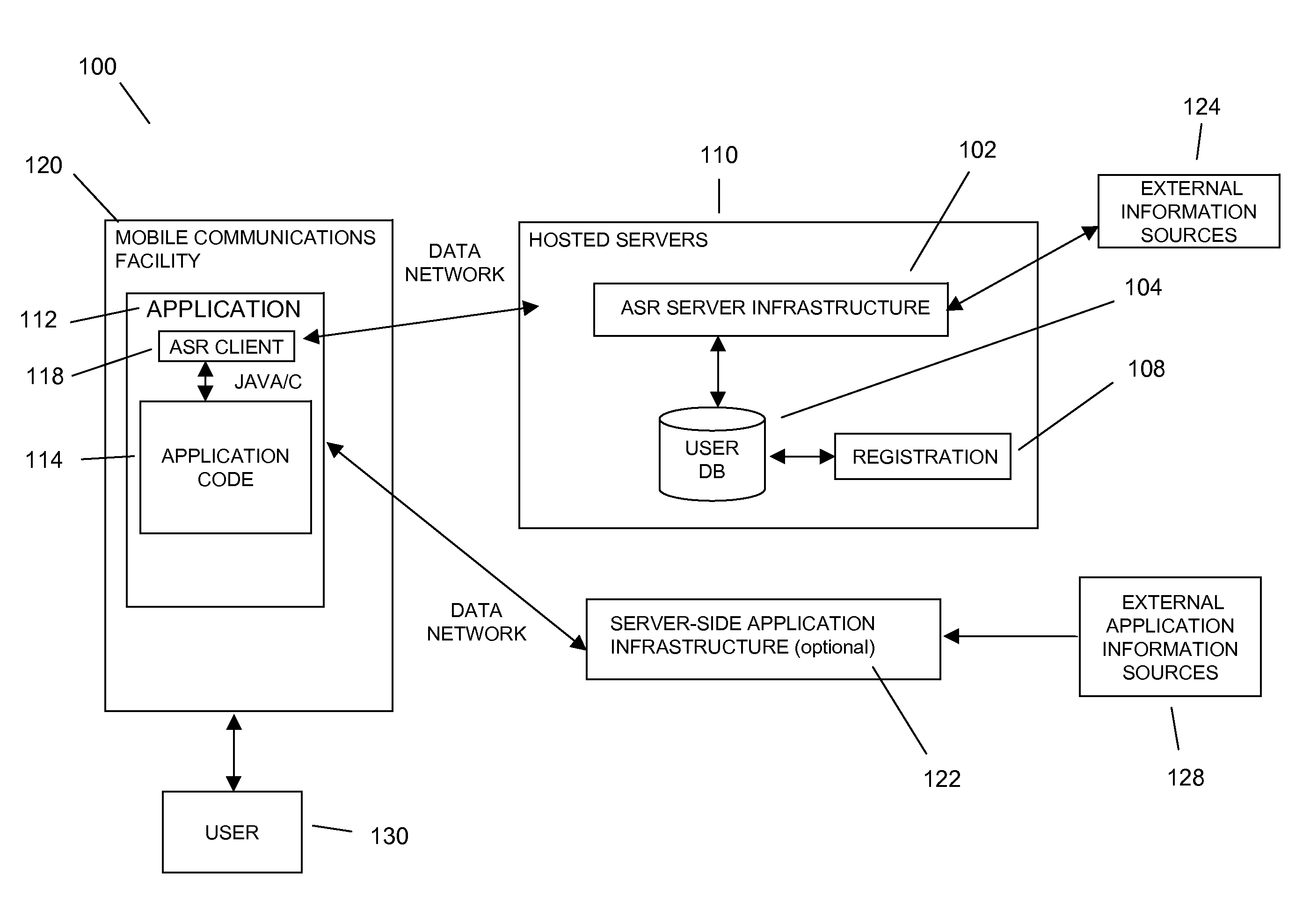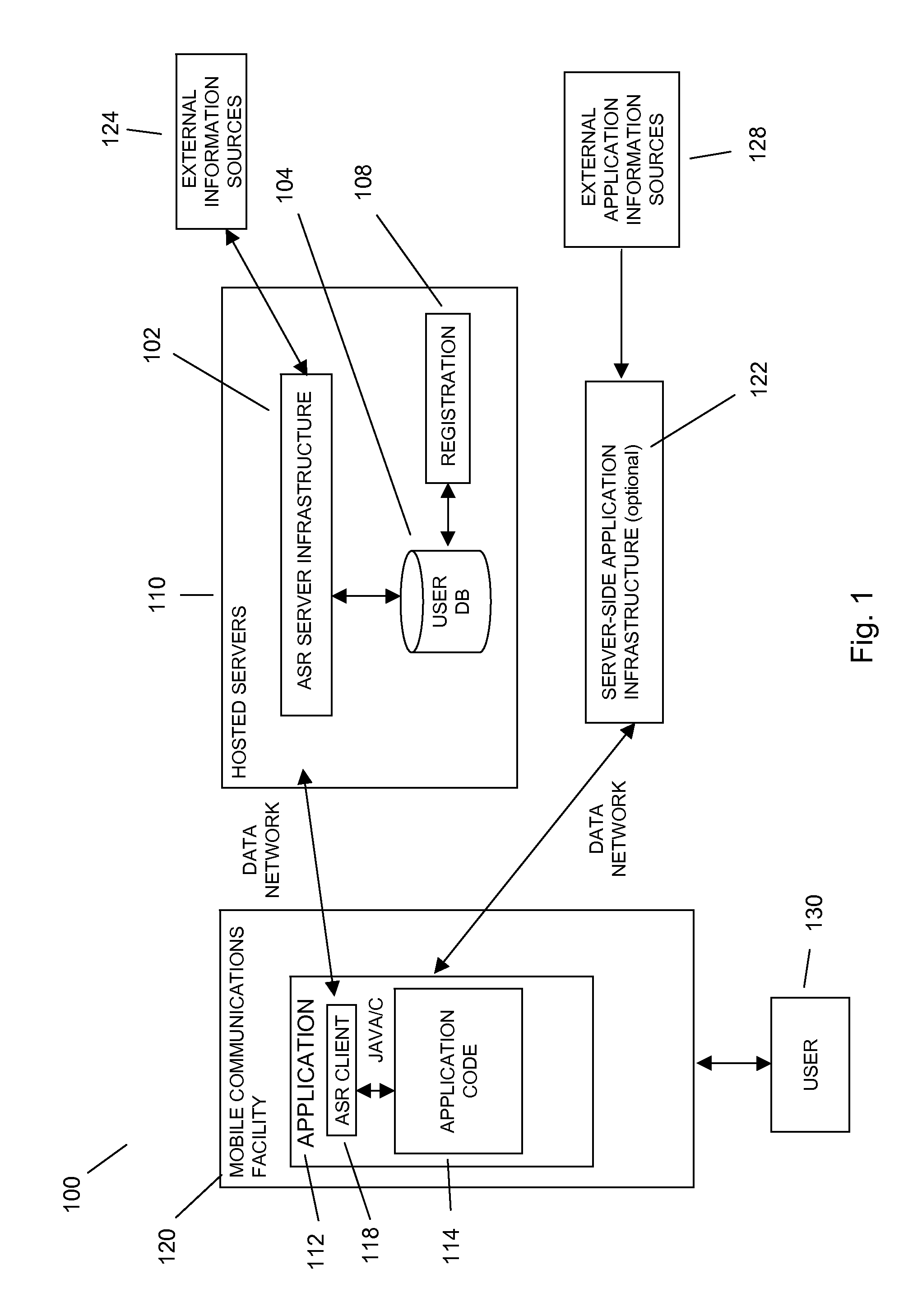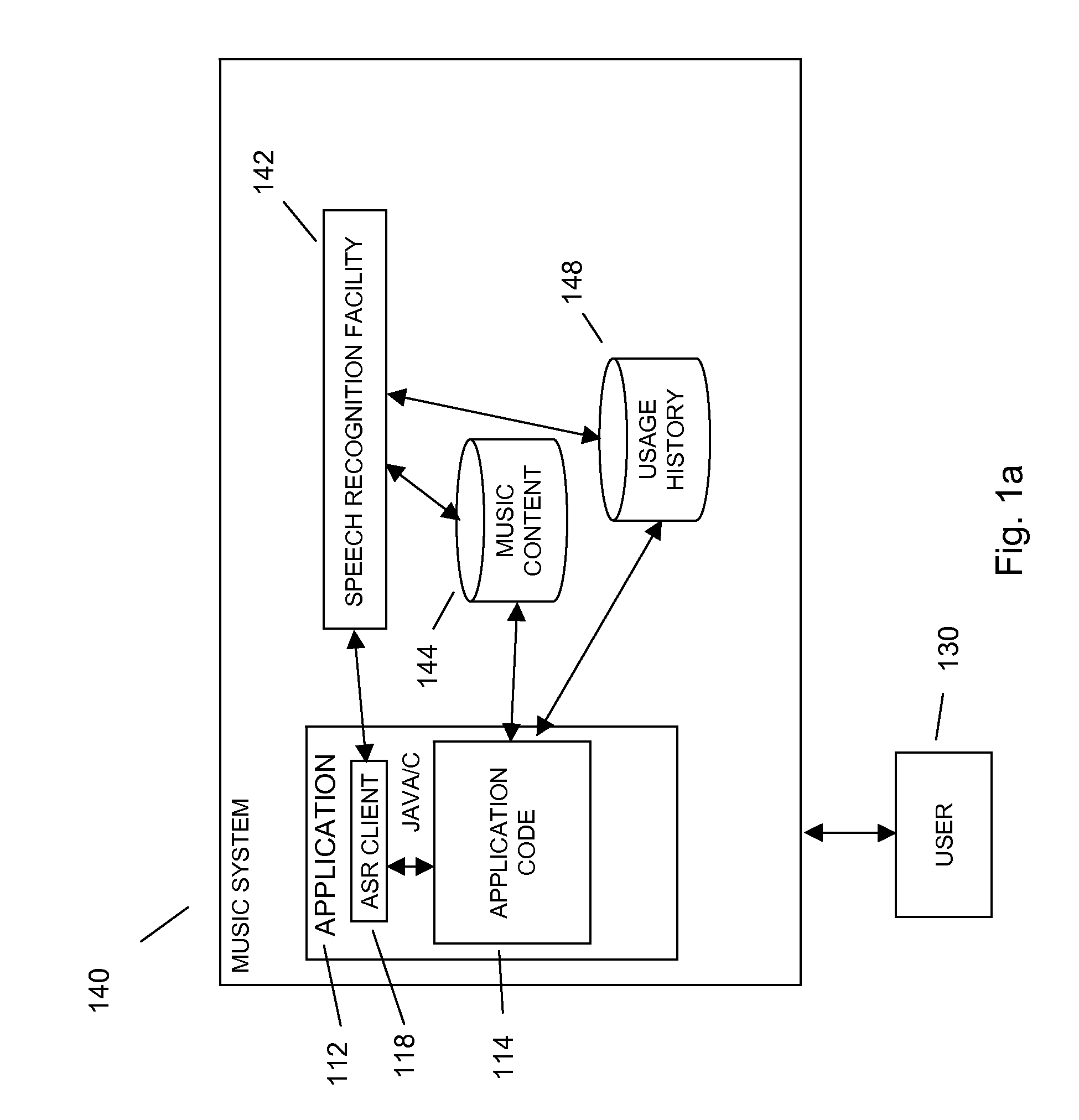Command and control utilizing ancillary information in a mobile voice-to-speech application
a technology of ancillary information and voice-to-speech application, applied in the field of speech recognition, to achieve the effect of increasing the acceptance of the application
- Summary
- Abstract
- Description
- Claims
- Application Information
AI Technical Summary
Benefits of technology
Problems solved by technology
Method used
Image
Examples
Embodiment Construction
[0046]The current invention may provide an unconstrained, real-time, mobile environment speech processing facility 100, as shown in FIG. 1, that allows a user with a mobile communications facility 120 to use speech recognition to enter text into an application 112, such as a communications application, an SMS message, IM message, e-mail, chat, blog, or the like, or any other kind of application, such as a social network application, mapping application, application for obtaining directions, search engine, auction application, application related to music, travel, games, or other digital media, enterprise software applications, word processing, presentation software, and the like. In various embodiments, text obtained through the speech recognition facility described herein may be entered into any application or environment that takes text input.
[0047]In an embodiment of the invention, the user's 130 mobile communications facility 120 may be a mobile phone, programmable through a sta...
PUM
 Login to View More
Login to View More Abstract
Description
Claims
Application Information
 Login to View More
Login to View More - R&D
- Intellectual Property
- Life Sciences
- Materials
- Tech Scout
- Unparalleled Data Quality
- Higher Quality Content
- 60% Fewer Hallucinations
Browse by: Latest US Patents, China's latest patents, Technical Efficacy Thesaurus, Application Domain, Technology Topic, Popular Technical Reports.
© 2025 PatSnap. All rights reserved.Legal|Privacy policy|Modern Slavery Act Transparency Statement|Sitemap|About US| Contact US: help@patsnap.com



